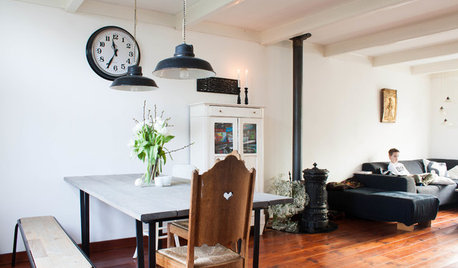Fruit weights are rounded off averages or expressed in ranges depending (28g=1oz)
RL=regular leaf
PL=potato leaf
DrW x B10 = Dr Walter crossed with a Brandywine x Cherokee Purple (B10 is the same sib line that produced 'Dora')
Dr Walter is a New Zealand favorite market tomato I got originally from Glenn in Plymouth, NZ. It is very much like the Florida standard "Walter". I don't know that it is or isn't. "Walter" is in the pedigree of some of Dr Gardner's early lines and also in the pedigrees of Dr Jay Scott's lines. 'Dr Walter" looks like that genera of tomato. 'Walter' has some disease resistance. If they are the same then it could possibly be conveying some Fusarium resistance.
{{gwi:1380010}}
This one has good flavor . Red, 110g, sweet. RL. 39E is the early blight resistant line I worked with at NCSU.
{{gwi:1380011}}
Red, 65g, paste, juicy paste, higher yielding than the next line below.tall.started producing early-mid season. very tall plant. very good flavor. this line is actually a backcross to get more flavor back into a brachytic/dwarf line.
{{gwi:1380012}}
Red, 75g, meaty, juciy paste, excellent flavor, good yield but not as much as previous. Plant habit slightly smaller. this line is actually a backcross to get more flavor back into a brachytic/dwarf line.
{{gwi:1380013}}
30g, pink, tart and sweet, above avg taste, RL, rather unusual to see that kind of multicarpelette fruits that are small
3W = "3 way" (I didn't name it that, the "Kiwi" did) which is ((Dr.Walter x B10) x Lucky Cross)
3W6-4 stands for the 4th F3 selection of the 6th F2 selection of the cross of ((DrW x B10) x Lucky Cross) - got that?
{{gwi:1380014}}
110g, red, RL, mid-late season, very good flavor and meaty. Worth pursing something out of this one. Plant habit is somewhat smaller compared to other hybrids.
{{gwi:1380015}}
45-50g, yellow skin, green flesh, nice flavor nice blend of sweet and tart, fruit taste better if not overly ripe, large leaves, very tall somewhat open habit
{{gwi:1380016}}
RL, 60g, yellow, green iside, large leaves
{{gwi:1380017}}
45g, rl, Sweet Tart, very nice flavor, vigorous but not as tall as others around it, more branching
{{gwi:1380018}}
30-35g. red. PL. 6-7 brix range, good flavor, somehwat tart even with higher brixes, moist mealy texture, heavy producer, very early {{gwi:1380019}}
Rl, Red, 75-110g, meaty, juice is tart, sweet flesh, vigorous plant, excellent set, early-mid (66 days)
PH = Purple Haze segregate
{{gwi:1380021}}
RL, 50g, pink, red flesh, Brix of 6.1, very nice flavor, very productive and early
{{gwi:1380023}}
RL, pink, firm fruit, holds well, would be good for market farmers and restaraunts, 30g. Brix of 5.5°, nice tomatoey taste and hint of sweet, somewhat mealy texture if too early. Slightly later matruity than previous line.
{{gwi:1380025}}
RL, 100g, mixed internal coloration, yellow/orange to green gel color
{{gwi:1380027}}
Tom's Yellow Wonder x (Sun Gold x Little Lucky)
(actually this is a Tom's Yellow Blunder parent) very productive, very early, succumb to disease early probably because of heavy fruit load but still is producing. Fruit has a predominately tart taste but with a hint of sweet. I liked it but my father didn't. There flesh inside is pinkish but the color of the flesh varies some. The gel is usually green/yellow. I didnt note weight but I would guess most were 50-75g with a few early ones probably close to 100g.
dominates on turkey sandwhiches
{{gwi:1380029}}
fruit pink, elongated, somewhat sweeter taste than previous hybrid of this shown. 25g. Very early (52 days), very productive. Open habit plant, med height.
{{gwi:1380030}}
varPL08-4 x Grub's Mystery Green (PL)
varPL08-4 is a yellow fruited variegated line derived from Galina's
PL, 40g, soft texture, mild flavor, predominately acid tasting
{{gwi:1380031}}
varPL08-6 x Grub's Mystery Green (PL)
varPL08-6 is another yellow fruited variegated line
notice the difference in shape between the using two different sib lines as a parent (vPL8-4 vs vPL8-6)
PL, 40g, bland, mostly acid taste
{{gwi:1380033}}
varPL08-6 x Sparks
PL, 50g, surprising flavor, tart gel but sweet overall, texture was ok. Vigorous very tall plant, open habit, good early set. early-mid season.
Sparks is a orange colored tomato.
This is a good teaching moment. If one parent is yellow and the other "orange" why did this tomato turn out red?
This is because this "orange" tomato (several genes can produce orange) is homozygous recessive and when orange it masks the red gene. Because I crossed it, even to a yellow. That orange gene now is heterzygous and the red gene (even though it too is heterzygous) becomes dominate over the other possibilities.
{{gwi:1380034}}
varPL08-6 x Yoder's German Yellow
40-45g, RL, acidic, mushy texture
Here is another example of a "yellow x yellow" turning out red. First Yoder's German Yellow isnt really "yellow". It's likely the tangerine gene which produces orange fruit. The same genetics apply as with the previous example whereas the red that was masked in Yoder's because of the orange (tangerine gene) suddenly shows in the F1 because expression of the orange gene trait is only half (T/t instead of t/t - proper notation is really t/t+).
{{gwi:1380036}}
Yellow Submarine x (Sun Sugar x yellow brachytic pear)
RL, 15g, fat pear shape, tart, mild flesh, not mushy or dry
brachytic is a type of gene that results in dwarfish type plants without the negative drag of other traits expressed with the dwarf gene.
{{gwi:1380038}}
Yellow Submarine x Grub's Mystery Green (PL)
PL, 20-25g, mild
Why no green?
Because true green fruits are the result of two pairs expressed - yellow and green
genetically that looks like rr and gg
yellow fruits are rr and g+g+
this F1 is rr/gg+ (heterozygous at the green locus)
since its heterzygous the green isnt expressed.
{{gwi:1380039}}
Out of 16 potential plants only one produce what I wanted. Finally a large fruited variegated plant (also happens to be potato-leafed). I hope it remains stable but will take more generations to make sure it is. Another plus is that it has moved away from the taste of the variegated parent which seems to dominate in the expression in most of the crosses I've made with it.
Also have some pink fruited variegated plants now.













charlesh2008
reaverg
Related Discussions
My Daylilies (very pic heavy)
Q
Recent Pictures (very pic heavy)
Q
How I Prepare the Soil (very pic heavy)
Q
Progress on my new kitchen!!!! Very pic heavy.
Q
containerted
muleOriginal Author
phantom_white
wvtomatoman
fusion_power
jtcm05
larryw